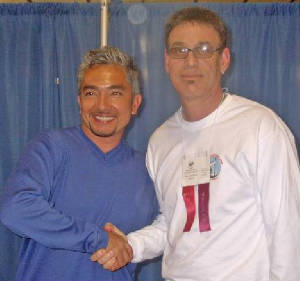Crate Training Your Dog
Training dogs in Chicago always reminds me about the importance of having a well-behaved dog. I am not only talking about on the street, but in the home as well. Living in close proximity with neighbors, as one does is a large metropolitan area like Chicago, it is important that your dog be a good neighbor too. Dogs who run the backyard or patio barking at people who are doing nothing but enjoying their own living space are not good neighbors. Dogs who bark incessantly in their apartments disturbing neighbors are not going to earn you any friends. However, many apartment dwellers aren't able to fix the dog's barking issues, often they are not even aware of it until a neighbor complains.
Many home dwellers believe they have no choice but to put their dog in the basement because their dogs destroy things when left in the house alone. Sometimes their dogs aren't fully housebroken. In other cases people believe that their dogs are happier to be left outside. Whatever the case, it is a still a really good idea to get the dog used to staying indoors in a crate when left alone.
The portable kennel or crate has been used, with great results, by trainers and breeders for many years. Only recently has the value of crate training begun to reach the average dog owner. While there are still many who believe that crating a dog is cruel, those who have systematically integrated it into a training program have found that their dogs not only are more stable, but also, their dogs love the crate.
The first step in crate training a dog is the introduction. If this crucial step is not handled correctly, the entire process may be slowed. Therefore it is imperative that the introduction is properly planned and handled.
First we must determine the proper location of the crate. Remember that your Chicago dog will be spending some time there so choose a good place for the crate. You should choose a place with a moderate amount of activity. Too much going on around the dog will be more likely to upset him. So the center of the living room may not be the best place. Likewise the crate should not be placed in a utility room or some dark forgotten realm of the kitchen. We do not want to make the dog feel abandoned. I find that a bedroom is a really good place to keep the crate. We spend a lot of time walking around the bedroom barefoot we also spend many hours sleeping in there. The end result is that the bedroom is thoroughly saturated with our scent. In this environment the dog is surrounded by reassuring odors, even if he can't see you or hear you, he will most likely feel comforted by these scents.
Once you have decided on the location for the crate, (we will assume that you have chosen the bedroom) it is time to get the crate ready for its new occupant. First make sure that the kennel is the right size. It should be large enough for your Chicago dog to stand up and turn around in, no larger. If you have a large breed dog that will grow rapidly, you might be better off buying a larger crate and just blocking off a portion in the back. If the crate is too large, it will not be as effective at discouraging the dog from urinating and defecating while in it. If the size is correct you are ready to get started. Place a few chew toys, in the crate, and maybe something soft to sleep on. Try to avoid blankets and pillows. They tend to encourage elimination because dogs seek out absorbent surfaces to urinate on. You should not put any food or water in the crate at this stage. Again, it will make it harder for him to hold his bladder. Remove all collars from the dog, and place him gently in the crate. If he struggles a great deal you can try to lure him in with a treat or two. Don't make a big issue of it the first time, but get him in that crate. Remember, dogs are exceptional at reading your emotions, if you are apprehensive about this procedure, the dog will be too. If you are calm and act as if this is a routine thing, then the dog will eventually follow your lead. As strange as it may seem, if you are too sympathetic to your dog's feelings on this matter, you will make the procedure harder for him.
Once you have the dog in the crate, leave the room, and shut the door.
You are going to stand just outside the door and listen. This way you can monitor his behavior. If you hear any sounds of "separation anxiety" such as whining whimpering, or barking, clap your hands. This is more intended to distract your dog, than frighten him. If he only gets quiet to listen, you have accomplished your goal.
He may only be quiet for a few seconds, or he may stay quiet for several minutes, in either case, repeat the above procedure as soon as he barks or whines again. It is important that you react as soon as the dog begins making noise. If you let the dog ramp up, it will make it harder interrupt the behavior. Also as his volume increases he may not even hear your interruption. Your goal is to get him to spend five minutes in the crate being quiet. A nice meat bone in the crate-something he ONLY gets in the crate-will help. If he has not reached this goal after about thirty minutes go ahead and let him out.
Once he has been in the crate quietly for five minutes, or he has been in the crate protesting for thirty minutes. it is time to release him. It is very important that you release him from the crate in the proper manner.
Enter the bedroom during a quiet period, we don't want him to think that you are coming as a result of his barking or crying. When you release him you will be tempted to praise him lavishly, speaking in high pitched excited tones. You must, however, avoid doing this because it will only confirm to the dog how traumatic his experience was. Instead you should calmly open the door to the crate and stand back. If the dog comes running out like a tornado, jumping up on you, ignore him. When he calms down, you can praise him. If he walks out slowly than calmly tell him that he is a good boy and give him a little scratch. After he has been out of the crate for a few minutes, you can praise him all you like.
Next we are going to teach your Chicago dog to spend the night in the crate. Again it is important that each stage of crate training is handled properly. If we are going to expect the dog to sleep in the crate all night without needing to go to the bathroom, we have to be sure that the digestive tract and bladder are empty. Take away all food and water two hours before bed time.
After the dog's last feeding be sure to take him out at least twice before putting him up for the night. When it is time to go to bed, take care of all your nightly business before putting the dog into the crate. Once the dog is in the crate you should turn off the light and go immediately to bed. We want the dog to understand that it is time to sleep. If everyone is going to sleep, than the dog is likely to go to sleep too. If he whines or cries deal with it in the same manner as you did before. If you are lucky the dog will sleep through the night without incident. However, if he does wake up in the middle of the night, he will probably need to go to the bathroom. So if you hear him whining in the middle of the night, take him outside. Once he has relieved himself, tell him he is a good boy, put him back in his crate, and go back to sleep.
In the morning he will definitely need to go out as soon as he wakes up. Don't hang around in bed telling him to be quiet, doing this will almost guarantee an accident. Instead get out of bed and walk him. It is important to note that I am not instructing you to let him out. I am telling you to walk him. If you are not outside with him, you cannot praise him for going outside when he does.
The method outlined above has worked successfully on hundreds of dogs and will probably work on yours. Even if you have tried to introduce your dog to a crate and had a rough time with it, this method will most likely work for you. If it doesn't, you don't have to give up. You just need help! Call Marc Goldberg, CDT from ChicagoDogTrainer.com. He will crate train your dog for you, and help your dog to actually volunteer to enter and chill out in his crate.
No dog should spend too much time in his crate. It's not for punishment. It's just to get housebreaking control for your Chicago dog or puppy. But the portable kennel is a great tool to get help you get your dog training done.Our Philosophy & Goals
Our philosophy is simple. Improve the life of both dog and family. All too often, unruly dogs do not fully enjoy life because their families constantly become upset and frustrated with them. This is difficult for both family and dog.
Our mission is simple. Make both dog and family happy.
What does is take to make your dog happy? He will thrive when you give him leadership and attention.

Making the family happy is a bit more complex.
Families typically want their dog to:
- Come when called, every time, on or off leash
- Walk nicely on a loose leash without pulling
- Sit until released
- Down until released
Families also want their dogs:
- Not to jump on people
- Not to charge through doors
- Not to dig in the garden
- Not to bark and chew inappropriately
- Not to climb on furniture you prefer they avoid
- Not to sniff and eat off the table and counters.
- Not to be wild and uncontrollable
- Not to ignore you when you want their attention




